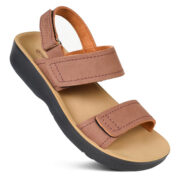
In the intricate process of rice milling, one of the most critical stages is dehusking, where the outer husk layer of the rice grain is removed to reveal the polished rice within. Among the various technologies employed for dehusking, rice dehusking rubber rolls have gained prominence for their efficiency, durability, and ability to produce high-quality rice. This article delves into the mechanics, advantages, and applications of rice dehusking rubber rolls in modern rice processing.
Understanding Rice Dehusking Rubber Rolls
Rice dehusking rubber rolls, also known as husking rolls or hulling rolls, are essential components of rice milling machinery. These rolls are typically made from high-quality rubber materials that possess specific properties conducive to efficient dehusking. The surface of the rubber rolls is engineered with precise patterns or textures designed to grip and remove the outer husk layer of the rice grain while minimizing damage to the underlying kernel. The flexibility and resilience of the rubber material allow the rolls to withstand repeated friction and pressure during the dehusking process, ensuring consistent performance and longevity.
Working Principle
The working principle of rice dehusking rubber rolls revolves around the frictional force generated between the rubber rolls and the rice grains as they pass through the dehusking chamber. When the rice grains come into contact with the rotating rubber rolls, the abrasive surface of the rolls effectively grips and peels off the outer husk layer, separating it from the inner kernel. The speed and pressure of the rolls can be adjusted to accommodate different rice varieties, moisture levels, and desired degrees of dehusking. Additionally, some rice milling machines incorporate multiple stages of dehusking with varying configurations of rubber rolls to achieve optimal results.
Key Features and Benefits
- Efficiency: Rice Dehusking Rubber Rolls are renowned for their high dehusking efficiency, capable of processing large quantities of rice grains with minimal loss or breakage. The precise engineering of the rubber roll surface ensures thorough husk removal while preserving the integrity of the rice kernel, resulting in high yields of polished rice.
- Durability: The durable nature of rubber materials makes dehusking rubber rolls resistant to wear and tear, even under continuous operation. Unlike metal or abrasive surfaces that may degrade over time, rubber rolls maintain their effectiveness and consistency throughout their lifespan, reducing the need for frequent replacements and maintenance.
- Quality of Rice: The gentle yet effective dehusking action of rubber rolls minimizes damage to the rice kernel, resulting in higher-quality polished rice with minimal broken grains or impurities. This makes rubber roll-dehusked rice highly desirable in both domestic and international markets, commanding premium prices and enhancing the reputation of rice milling operations.
- Versatility: Rice dehusking rubber rolls are versatile components that can be customized to suit various rice milling applications and processing requirements. Manufacturers offer a range of rubber roll designs with different surface textures, hardness levels, and configurations to accommodate specific rice varieties, milling conditions, and end-user preferences.
- Ease of Maintenance: Maintaining rice dehusking rubber rolls is relatively straightforward compared to other dehusking technologies. Routine cleaning and inspection of the rolls, along with periodic adjustments to roller speed and pressure, help ensure optimal performance and longevity. Additionally, modern rice milling machines may feature automated monitoring systems or self-cleaning mechanisms to streamline maintenance tasks and minimize downtime.
Applications
Rice dehusking rubber rolls find widespread applications in rice mills and processing facilities across the globe. They are integral components of various types of rice milling machines, including hullers, shellers, and dehuskers. These rolls are suitable for processing a wide range of rice varieties, including long-grain, medium-grain, and short-grain rice, as well as specialty rice types such as basmati or jasmine rice. Additionally, rice dehusking rubber rolls are utilized in both small-scale and large-scale rice milling operations, from local rice mills serving rural communities to industrial-scale facilities catering to national and international markets.
Conclusion
In conclusion, rice dehusking rubber rolls play a pivotal role in modern rice processing by offering high efficiency, durability, and quality in the dehusking stage. Their ability to gently remove the outer husk layer while preserving the integrity of the rice kernel makes them indispensable components of rice milling machinery. As the demand for high-quality rice continues to grow globally, the importance of rice dehusking rubber rolls in optimizing rice milling operations and ensuring the production of premium rice products cannot be overstated. By harnessing the capabilities of these versatile and reliable components, rice millers can meet the evolving needs of consumers and contribute to the sustainability and profitability of the rice industry.








